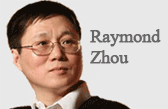Way forward for new leadership
By Dan Steinbock (chinadaily.com.cn) Updated: 2012-12-02 19:35If China is rebounding, why did the benchmark Shanghai market recently close at its lowest level in almost four years?
Shanghai's market is dominated by small retail investors, with the role of foreign investors still being limited. But times are changing. Since spring, deregulation has gradually taken off in the financial sector. Today, China is still compelled to export capital to other countries. But in the coming years, Chinese people should be the primary beneficiaries of their own savings.
On the other hand, uncritical progress is not warranted. When New York City became the world's financial center, Britain lost its competitiveness. When Wall Street grew into the global financial hub, de-industrialization eroded the US' industrial base. Therefore, what China needs is a balance between financial reforms and the structural transition to innovation-led economic growth.
During the first three quarters of 2012, urban dis-posable income has grown faster than GDP, suggesting that the Chinese people con-tinue to reap growth benefits in almost all regions.
In the medium term, China's development requires the spread of prosperity from the coastal regions to the inland and the western regions. In the country's first- and second-tier cities, the ability of migrant workers to obtain a permanent residential status — hukou or household registration — would support accelerated consumption. The first tests in small cities have been promising.
A year ago, Xi Jinping supported the acceleration of economic reforms by saying that it is necessary to "pay even more attention to a top-level design for reform and a long-range plan for reform". In the medium term, these structural reforms are likely to include such as:
Shift from investment-driven to consumption-led growth; expanding social security and health services; shift from cost efficiencies toward innovation-driven competitiveness and gradual reduction of subsidies; increasing efforts at sustainable development; strengthened local governance, coupled with a shift in the growth model from land-sales to increasing efficiencies; and further integration of China into the world economy.
None of these reforms will be easy. Furthermore, the reduction of local government debts is critical to sustained growth. The progress, however, can be monitored by three important benchmarks: the struggle against corruption, affordable housing and further reform of State-owned enterprises.
In the past decade, export-led growth supported China's expansion. In the coming years, global trade will grow slowly and, hence, China's trade engines, especially Guangdong province, must move toward innovation-driven growth.
At the same time, the new leadership must deter external efforts to exclude China from free trade in Asia and accelerate regional integration. In potentially highly adverse conditions, the new leadership will seek to protect China from the global crisis and support the country's sustained reforms and integration into the world economy.
By mid-2013, the new leadership is likely to develop its policy platform. At the broadest level, the policies are likely to focus on economic structural reforms, continued intra-party democratization, intensified fight against corruption, and China's rising global influence.
The author is research director of international business at India, China and America Institute, an independent US-based think tank, and visiting fellow at Shanghai Institutes for International Studies in China and EU Centre in Singapore.












